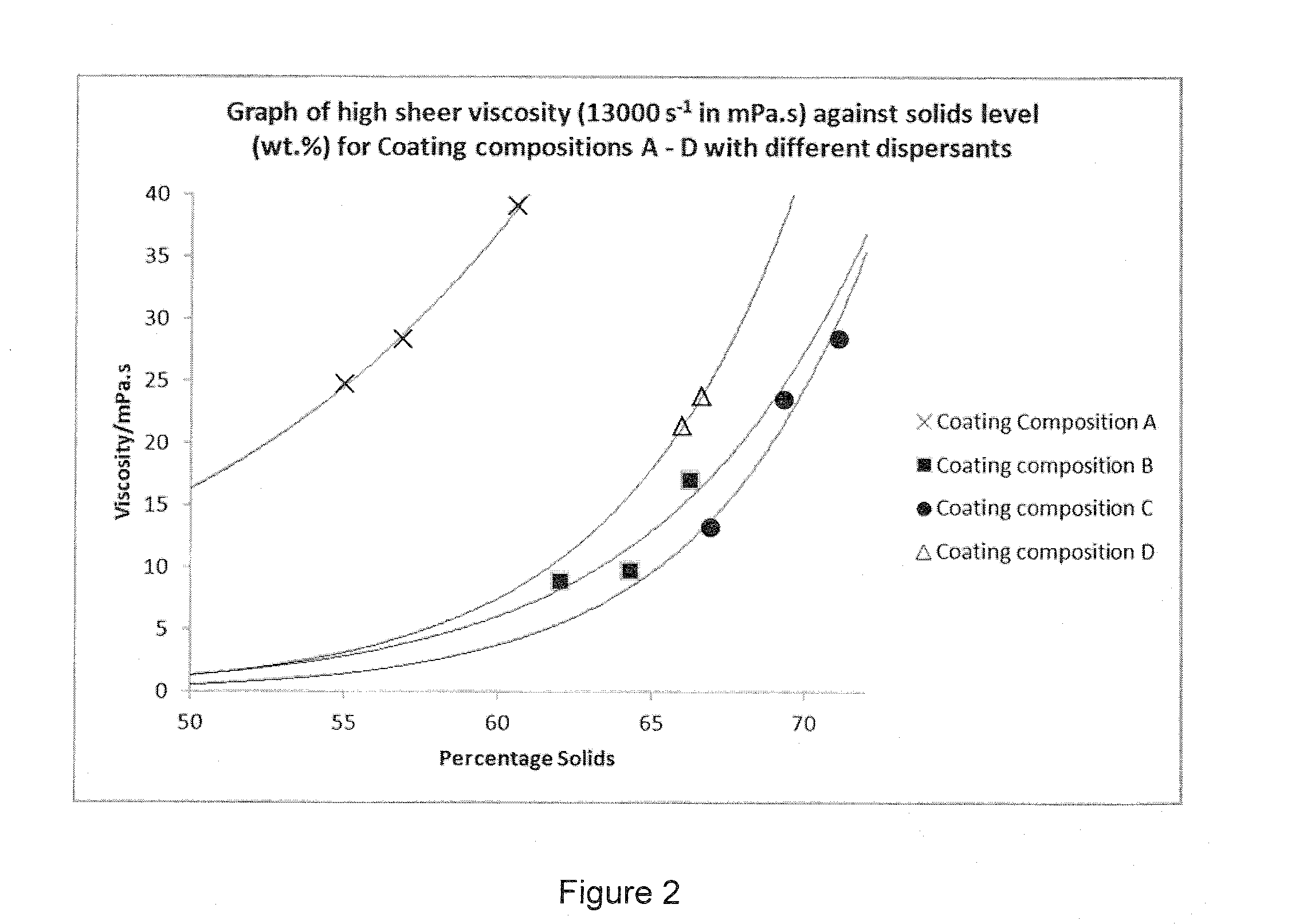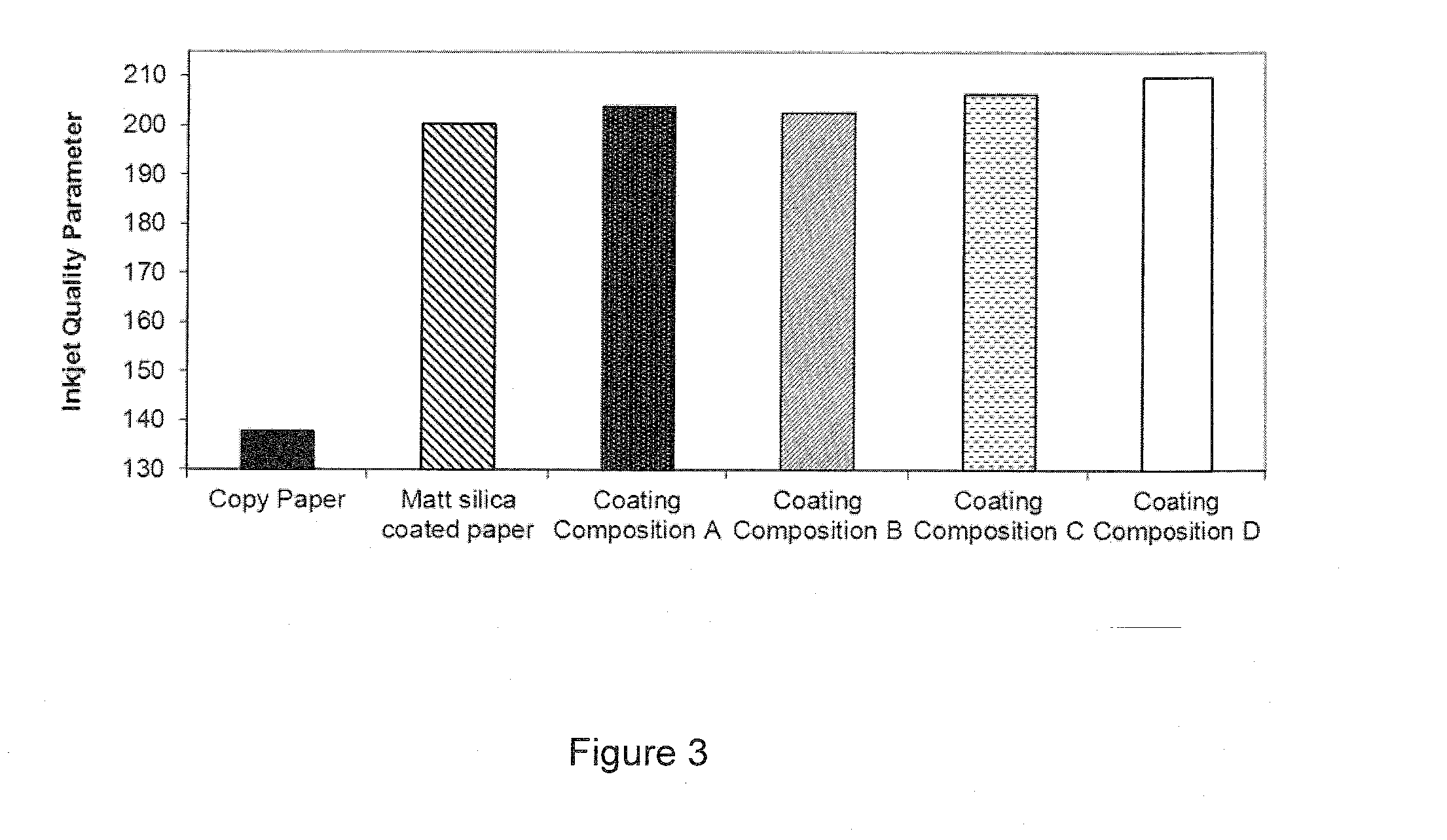Pigment compositions
a technology of pigment compositions and compositions, applied in the direction of pigment coatings, duplication/marking methods, coatings, etc., to achieve the effects of low production cost, minimal or no runnability issues, and high solid conten
- Summary
- Abstract
- Description
- Claims
- Application Information
AI Technical Summary
Benefits of technology
Problems solved by technology
Method used
Image
Examples
example 1
[0100]A presscake of calcium carbonate A was prepared in the absence of dispersant comprising about 74 wt % solids.
[0101]The amount of dispersant was determined by using the dispersant Solplus D570. Small portions of the dispersant were added to the PCC presscake and were stirred initially by hand and then by using a laboratory stirrer. The amount of dispersant added was monitored to obtain a cumulative amount. When the slurry became fluid enough to measure the viscosity, a Brookfield viscometer was used to measure the viscosity at a speed of 100 rpm, which gave a shear rate of 31 s−1. The dispersant was added until a minimum in the viscosity was reached.
[0102]The dispersant was used to disperse the PCC cake which was made up into a number of coating compositions using 3 pph PVOH (Binder B) and 3 pph latex (Binder A). The total amount of inorganic particulate material present was 100 parts dry weight. The binders and any other additives are expressed with respect to the total amount...
example 2
Coating Composition E
[0110]Coating Composition E comprises a 75 wt %:25 wt % blend of calcium carbonate B and talc A. 15 wt % of calcium sulphate was added to the composition. The dispersant used to disperse the pigment blend was the non electrostatically stabilizing non ionic EO / PO (ethylene oxide / propylene oxide) block copolymer dispersant possessing a phosphate end group (approximate molecular weight of 1000) dosed at 1 pph based on the dry weight of the calcium carbonate, talc and calcium sulphate. The calcium carbonate, talc and calcium sulphate were dispersed using the dispersant in a high speed mixer and then the binders were added to form the coating colour. The coating colour was screened through a 150 μm mesh before use. The ratio of Binder C:Binder D was 8 pph:2 pph. The binders and any other additives are expressed with respect to the total amount of inorganic particulate material (for example 3 pph latex is 3 parts of latex per 100 parts total of inorganic particulate m...
PUM
| Property | Measurement | Unit |
|---|---|---|
| yellow” | aaaaa | aaaaa |
| yellow” | aaaaa | aaaaa |
| particle size distribution | aaaaa | aaaaa |
Abstract
Description
Claims
Application Information
 Login to View More
Login to View More - R&D
- Intellectual Property
- Life Sciences
- Materials
- Tech Scout
- Unparalleled Data Quality
- Higher Quality Content
- 60% Fewer Hallucinations
Browse by: Latest US Patents, China's latest patents, Technical Efficacy Thesaurus, Application Domain, Technology Topic, Popular Technical Reports.
© 2025 PatSnap. All rights reserved.Legal|Privacy policy|Modern Slavery Act Transparency Statement|Sitemap|About US| Contact US: help@patsnap.com



